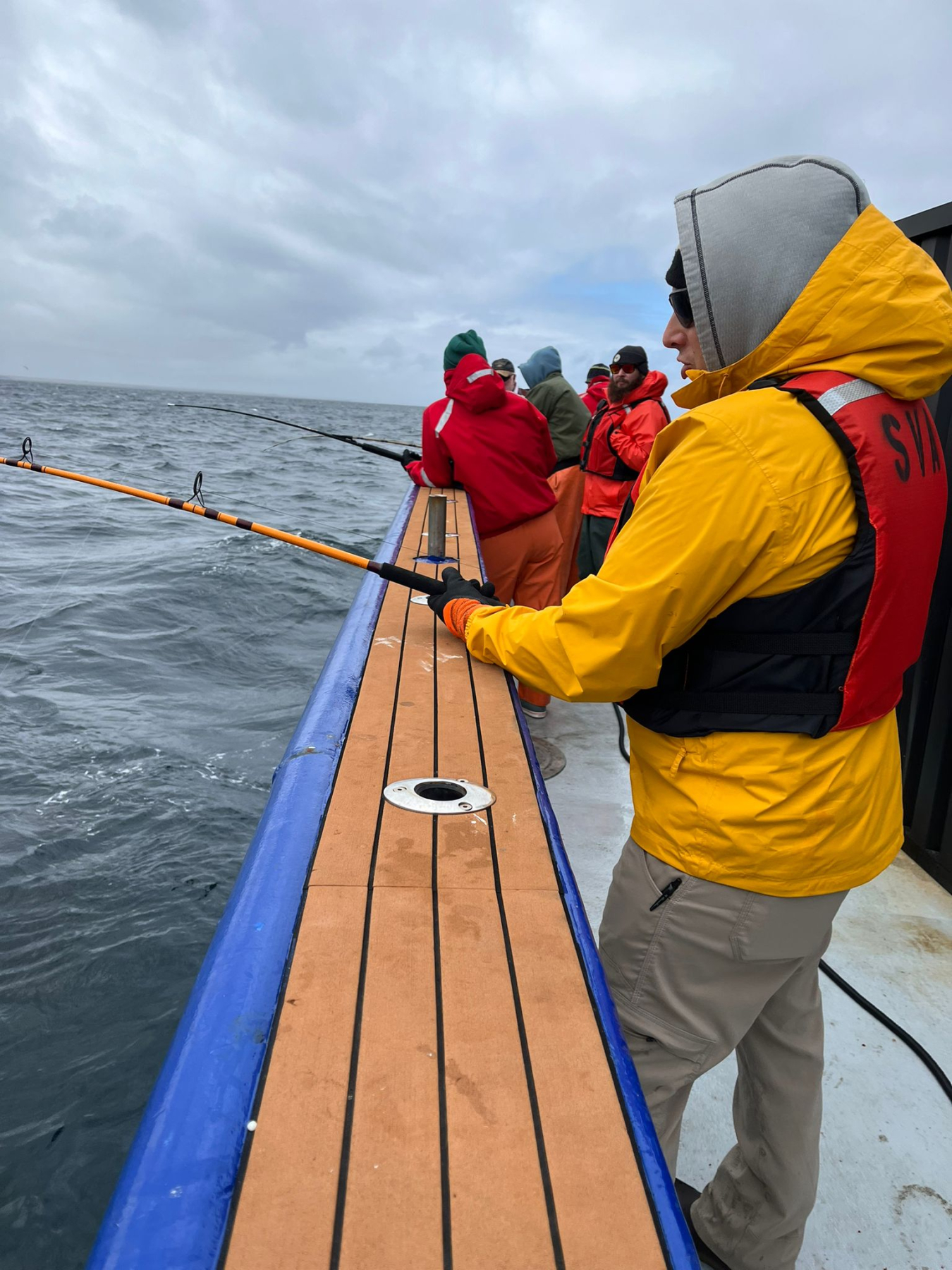LM team braves harsh weather while completing sampling and inspection at remote Aleutian Islands site
July 25, 2023
After months of planning, U.S. Department of Energy Office of Legacy Management (LM) staff and a support team traveled by plane and boat to the Amchitka, Alaska, Site to monitor, inspect, and conduct environmental sampling. Their goal was to ensure site conditions continue to keep the environment and human health protected.
LM manages the Amchitka site according to a site-specific, Long-Term Surveillance and Maintenance Plan. The Amchitka Site fact sheet provides more information about the plan and the site.
The team spent 18 days living and working from the boat — named the Poseidon — navigating winter-like weather with temperatures in the 40s and rain, fog, and wind. Ocean waves made standing, walking, and working on the rocking Poseidon challenging, but the team relied on their training to safely deal with the conditions and wore protective gear to shield themselves from the elements. Each team member stayed focused on their work, regularly discussing safety and health, each day’s plan, and their roles and responsibilities.
“This group of dedicated individuals collaborated well as a team,” said Stephen Pitton, LM Amchitka site manager. “They worked hard in tough conditions, collected the samples, inspected all the mud pits, successfully solved challenges, and finished a little early thanks to decent weather.”


Environmental sampling focused on two things: verifying marine foods were safe to eat and determining if any contaminant migration was occurring from underground nuclear tests that took place in the 1960s and 1970s. The team collected marine water, freshwater, precipitation, and rockweed samples from the Poseidon and Amchitka Island. They also collected marine fish samples, including rockfish, Irish lord, Pacific cod, Atka mackerel, and Dolly Varden.
DOE cleaned up the Amchitka site from underground nuclear testing and drilling, and LM inspects and monitors the site. On this trip, the LM team inspected and observed the seven drilling mud pit caps for settling, cracks, and other maintenance needs and examined repairs completed in 2022 to see if they are functioning as designed. The team determined the caps remain in adequate condition. They also collected vegetation data and observed and documented plants at the mud pits.
LM and the support staff returned home safely in late June from their successful journey and submitted the samples for laboratory analysis. Portions of the analysis may take up to a year to complete. LM will share findings publicly, once lab and data analysis is finalized.
LM is committed to conducting long-term surveillance and monitoring at the Amchitka site to ensure conditions continue to keep the environment and human health protected. LM will continue to collaborate with stakeholders and the Amchitka Working Group on site-related topics.


